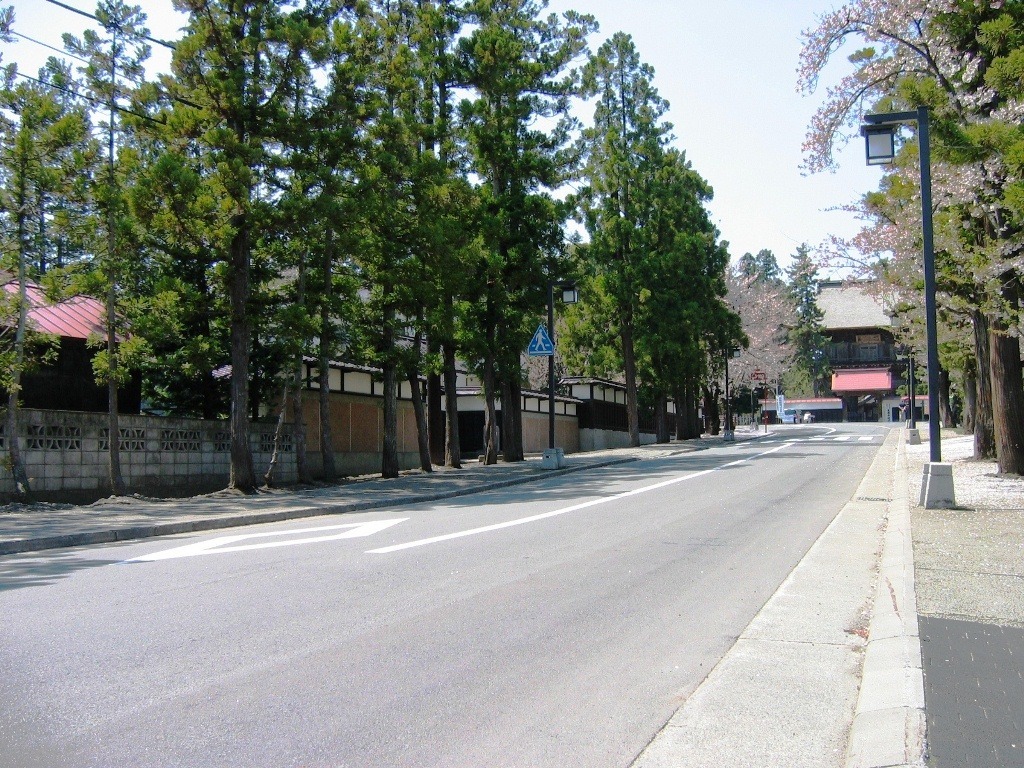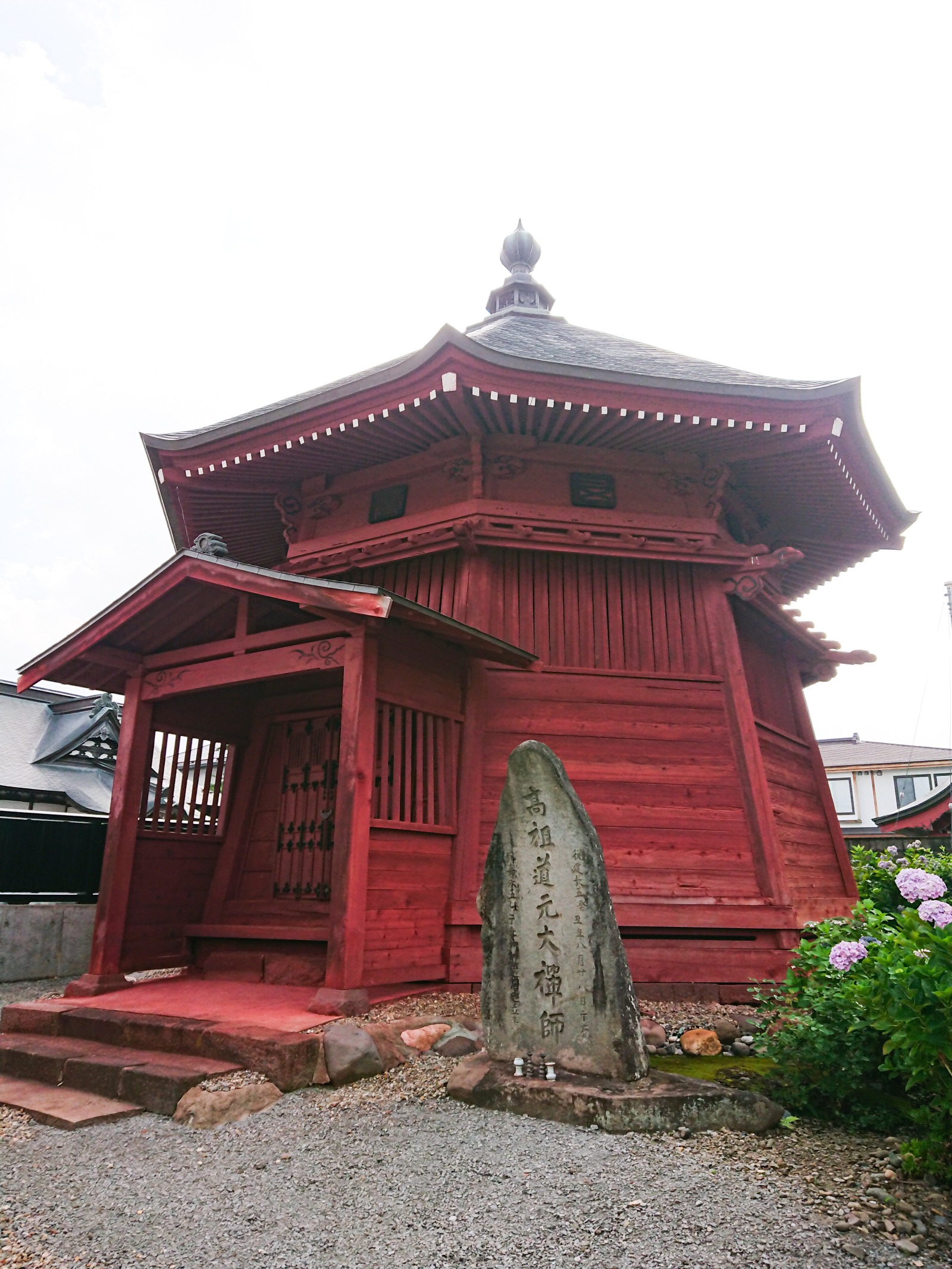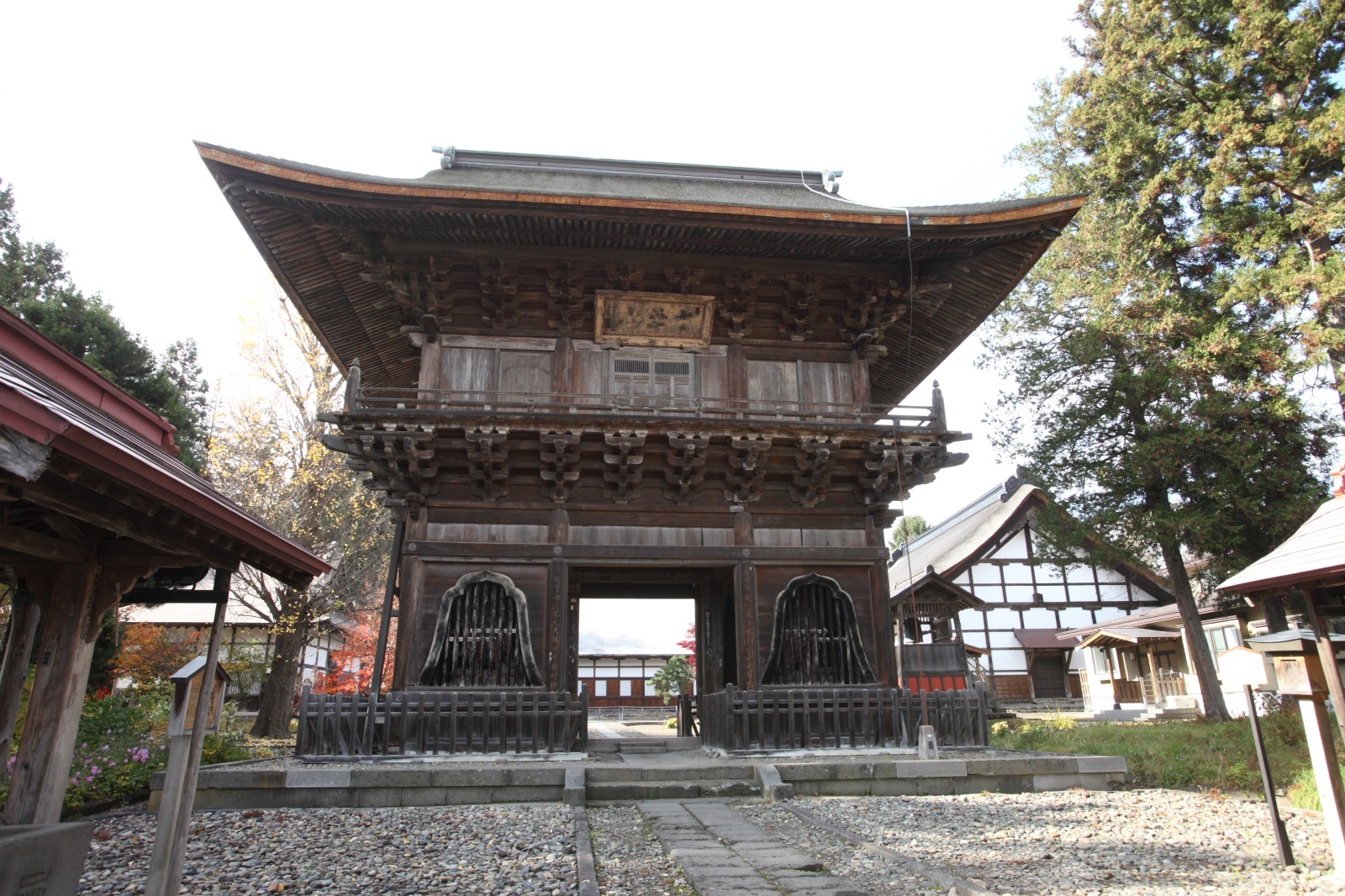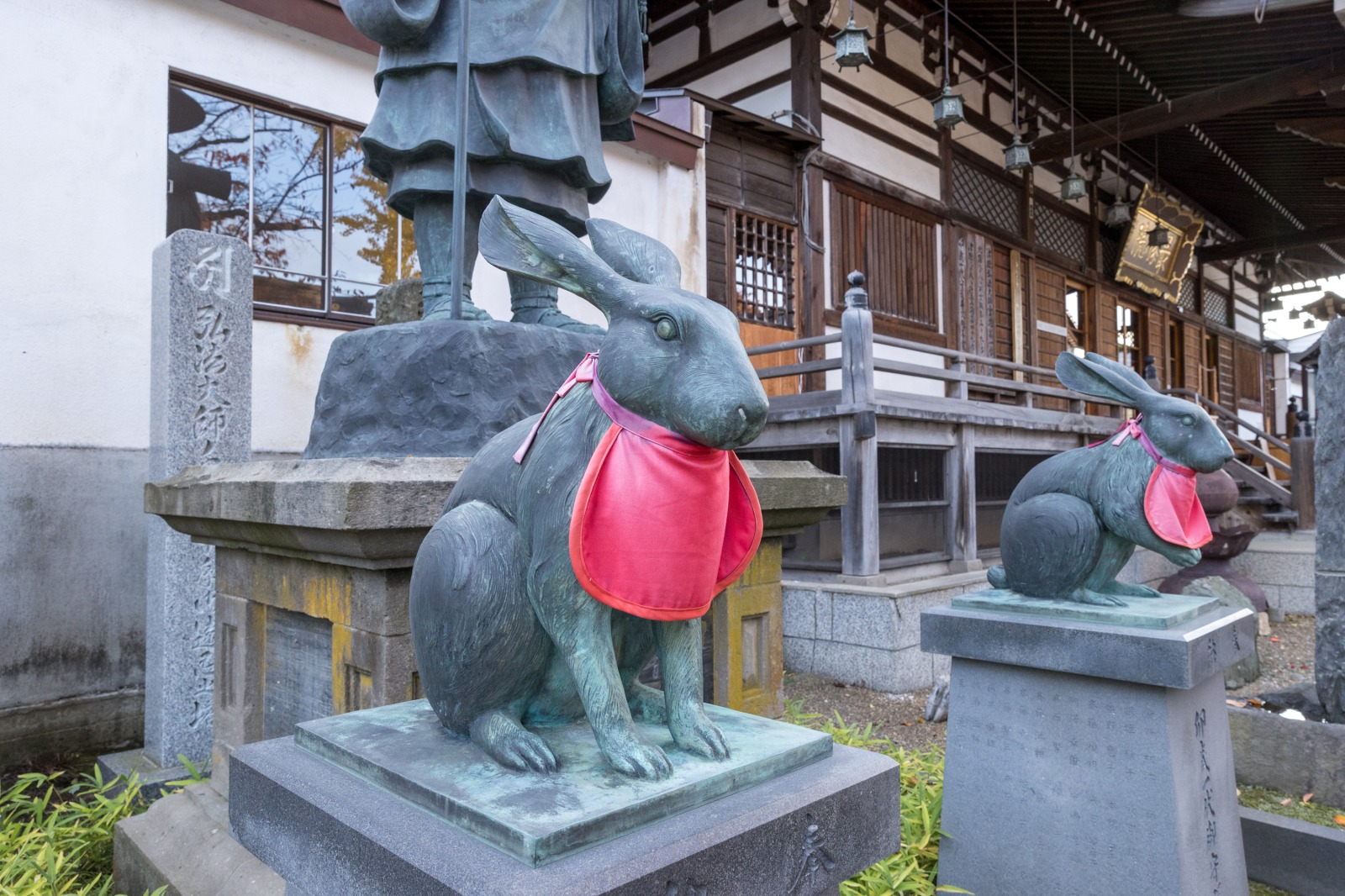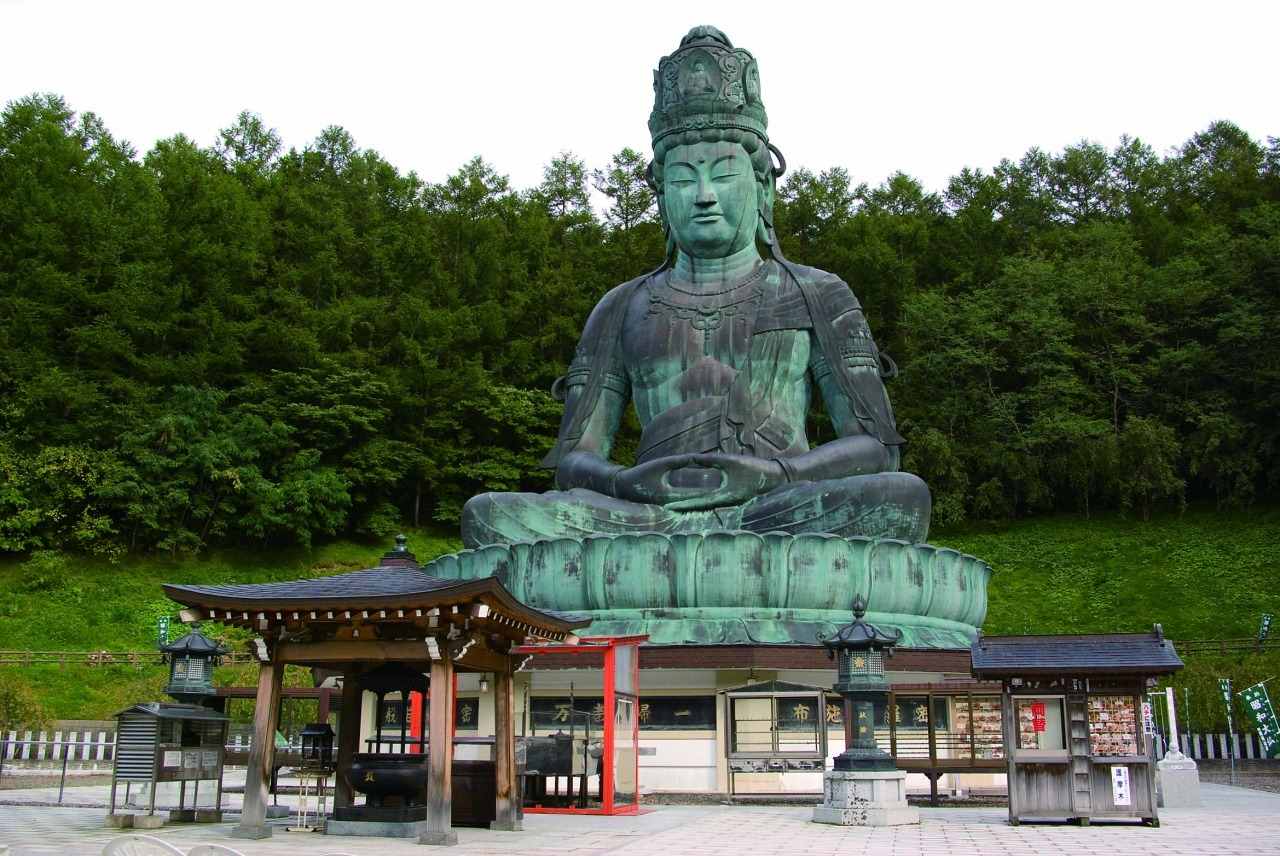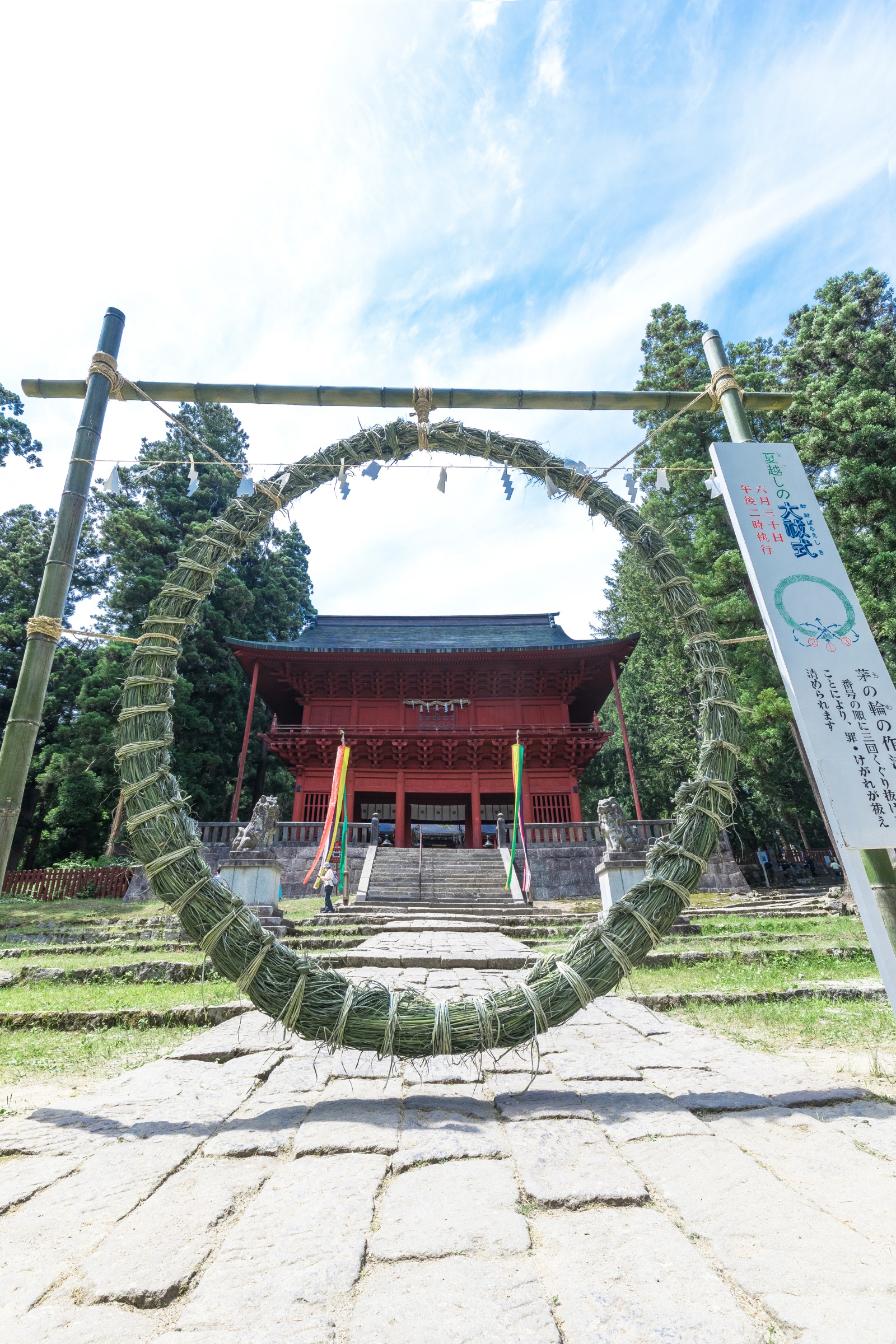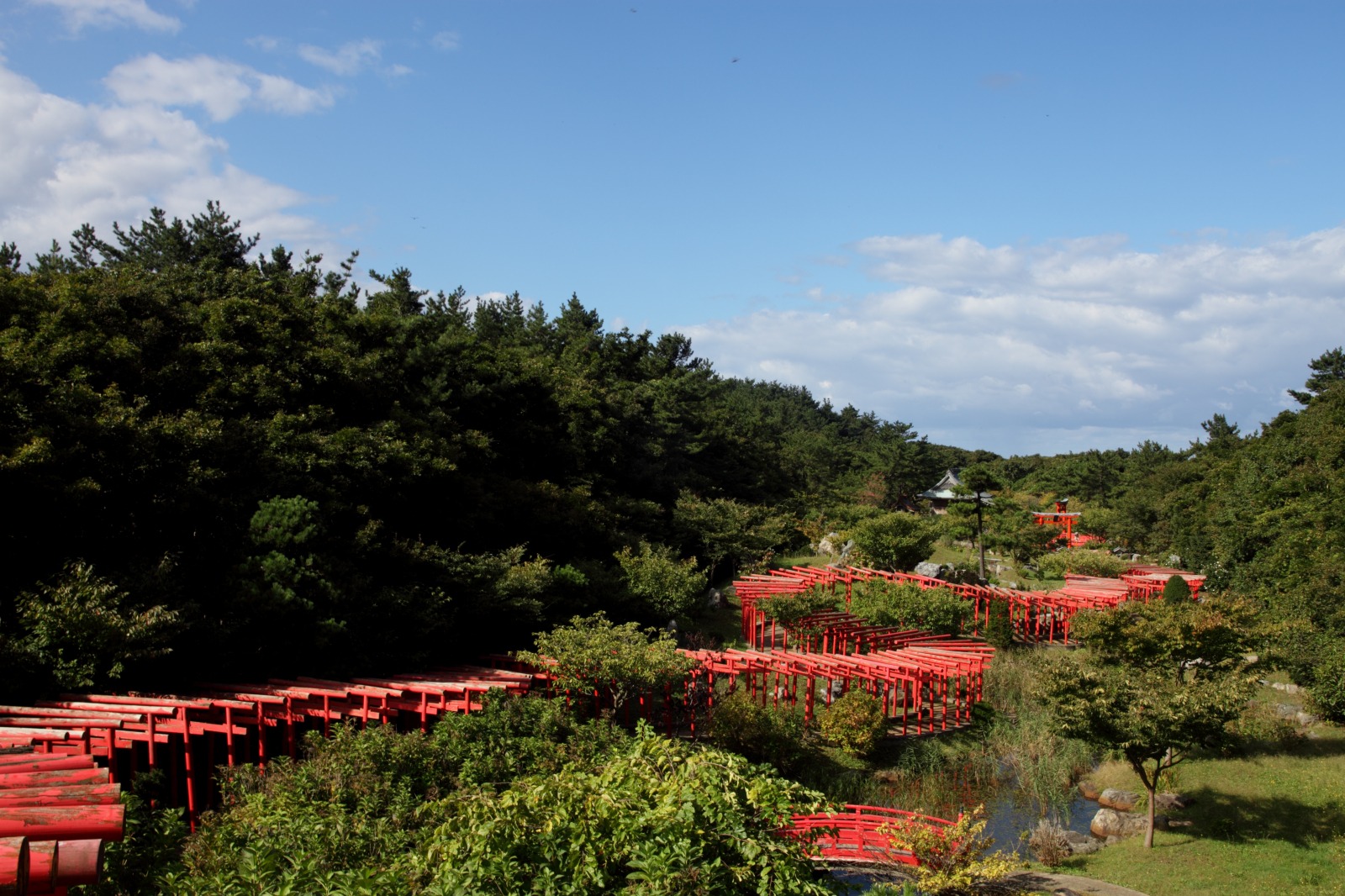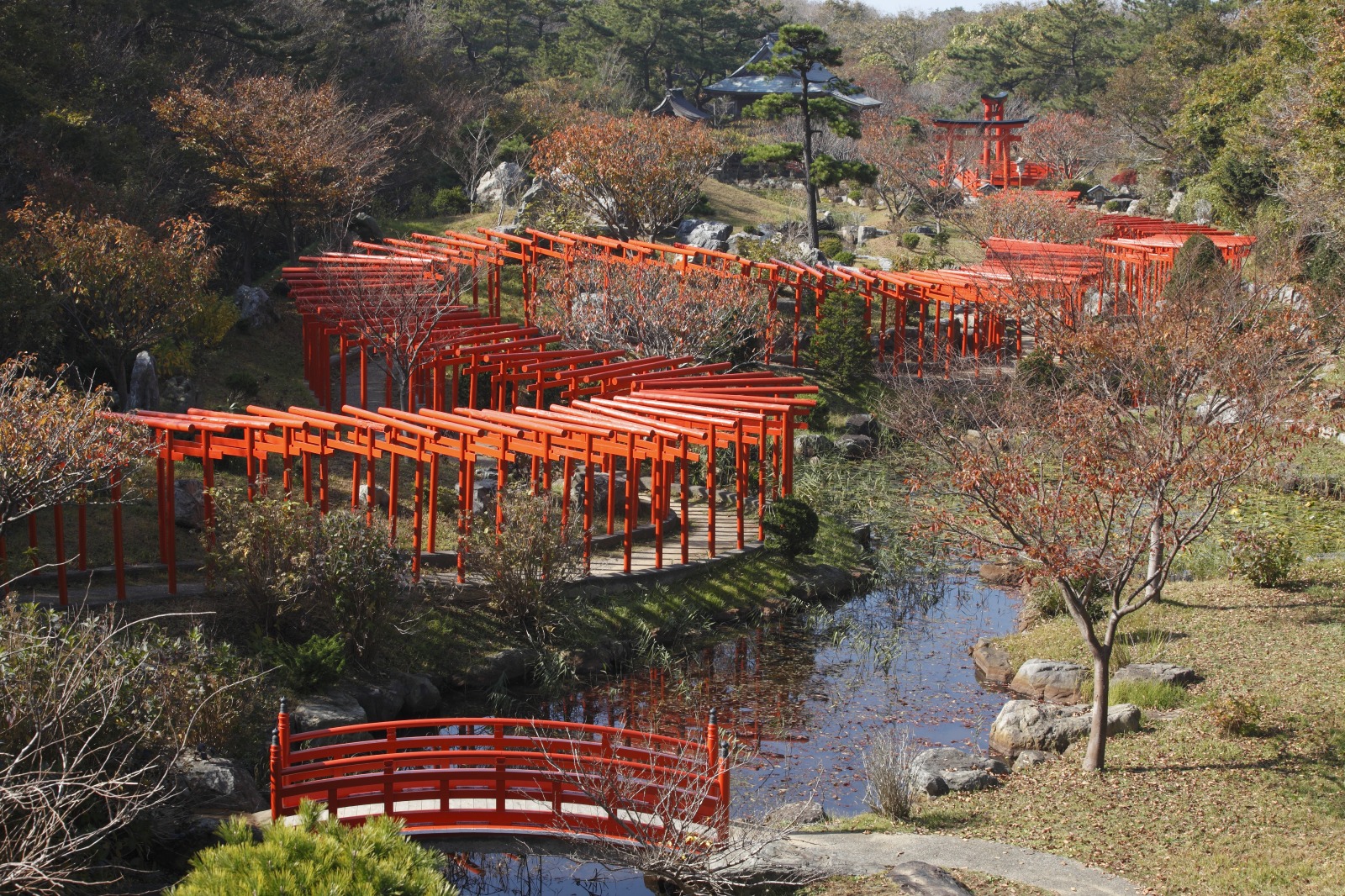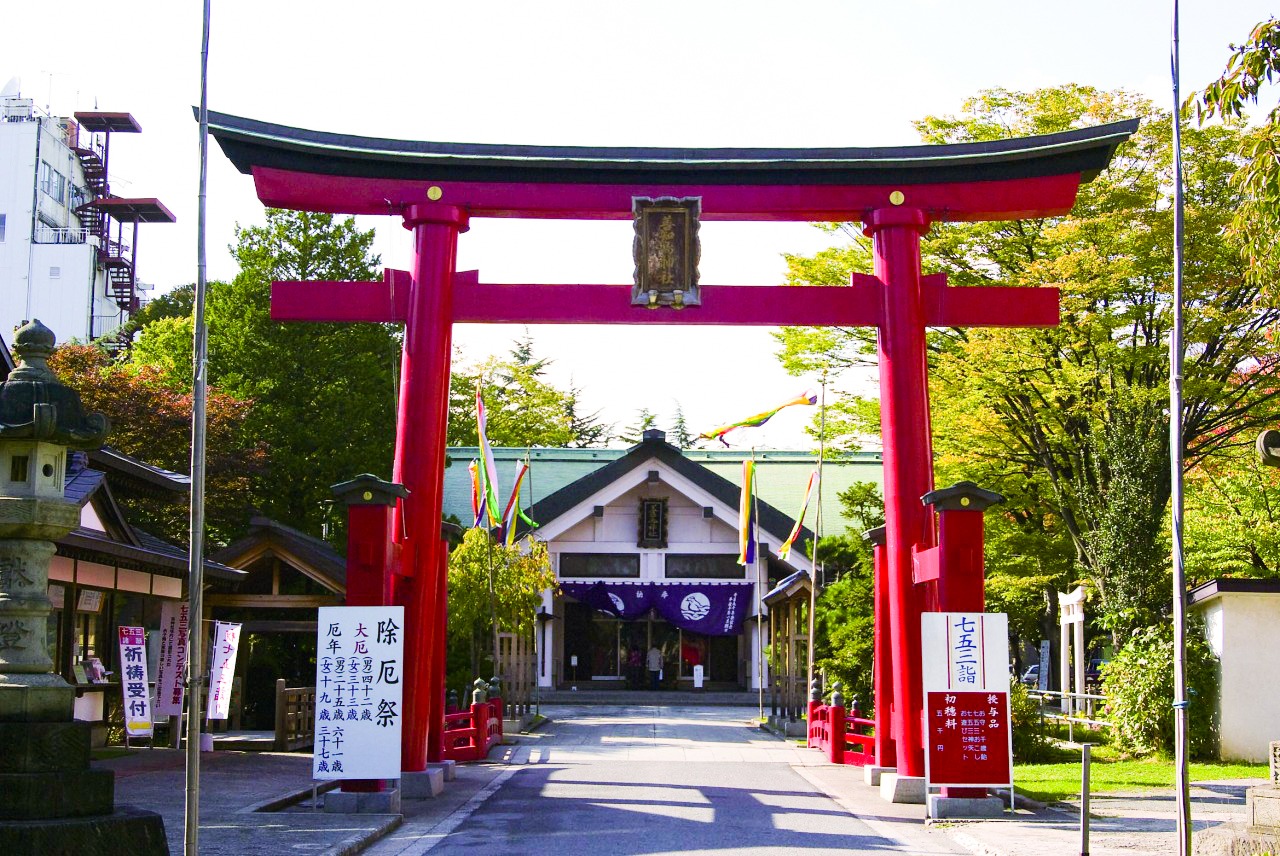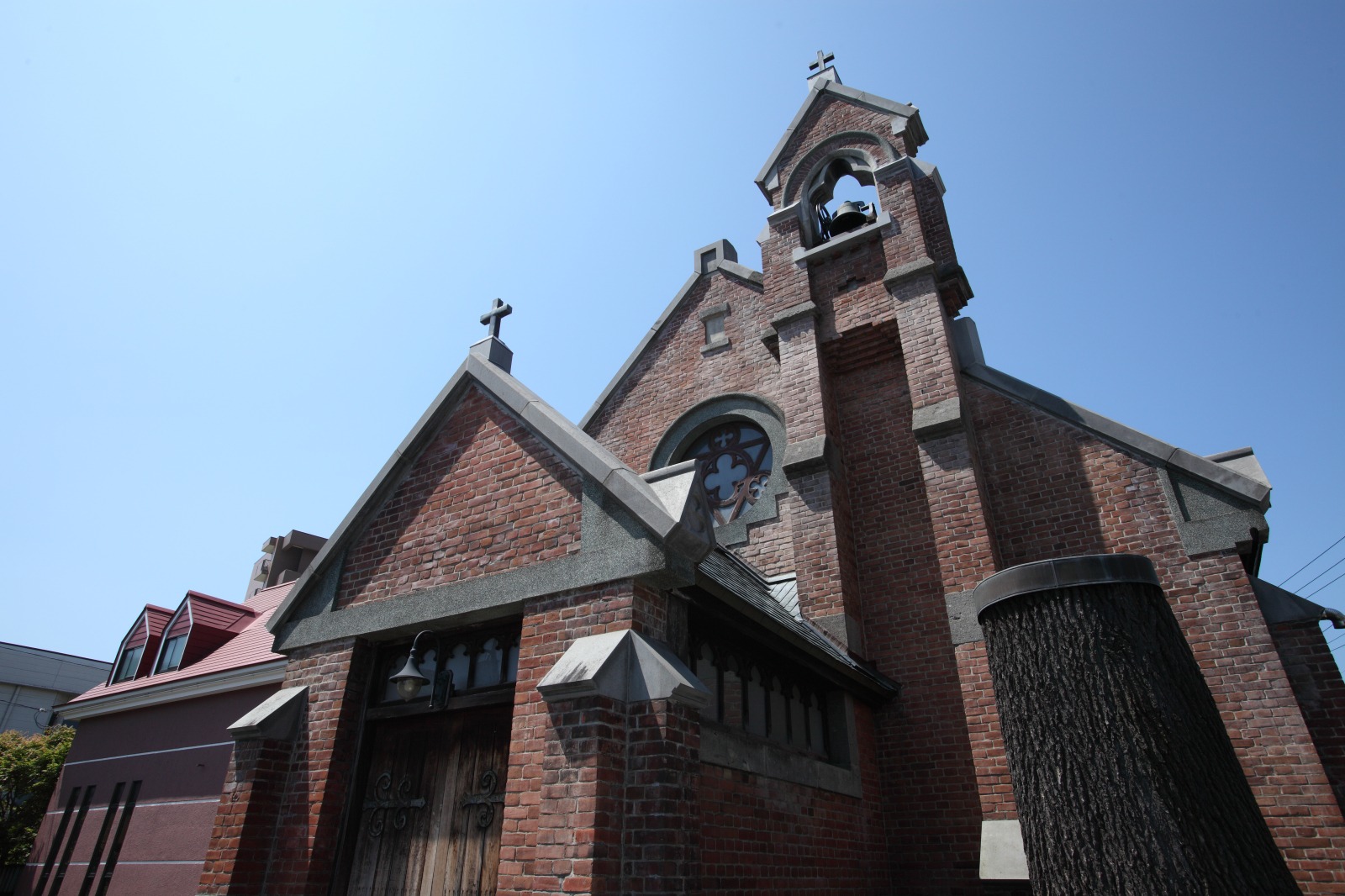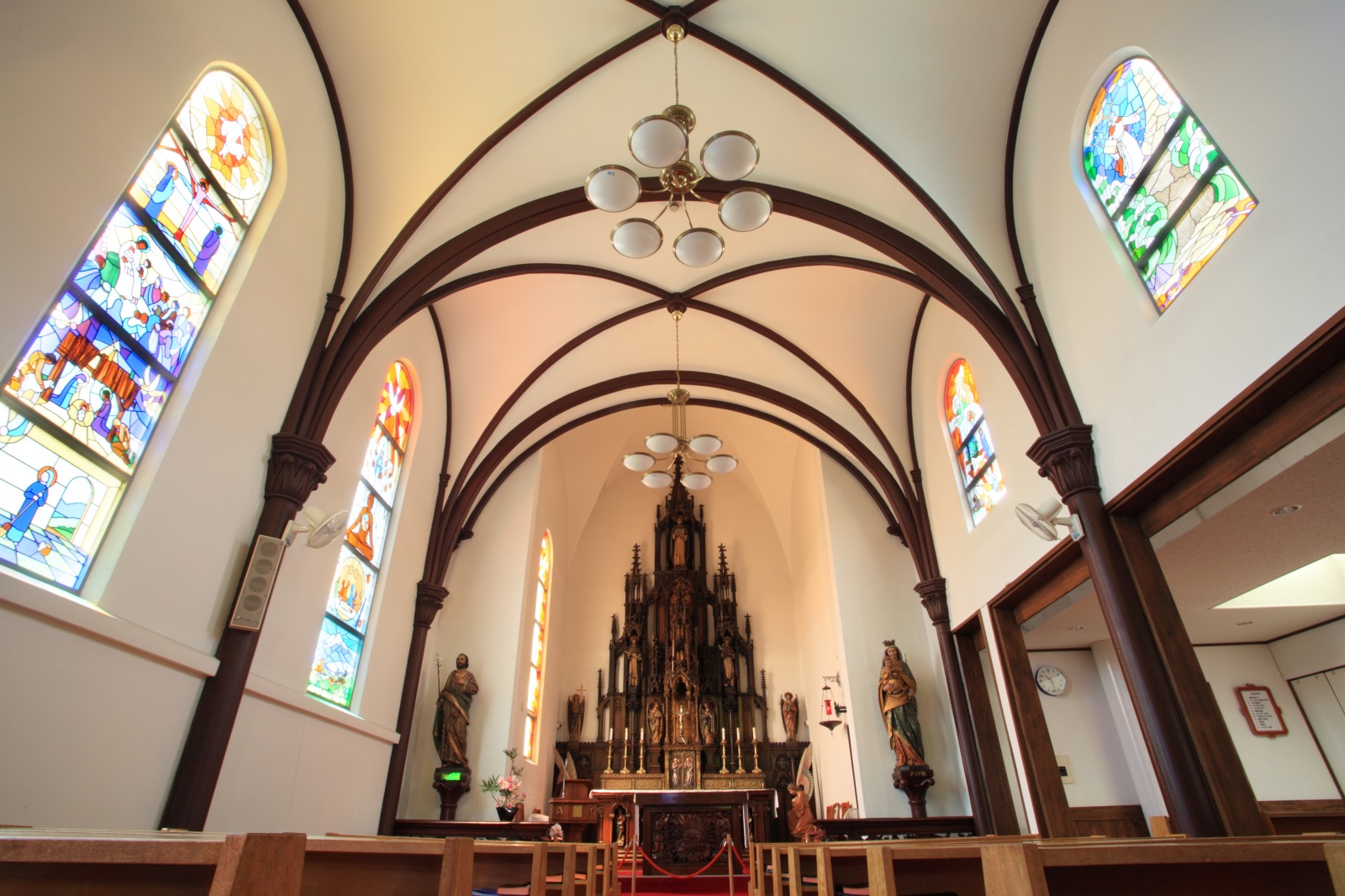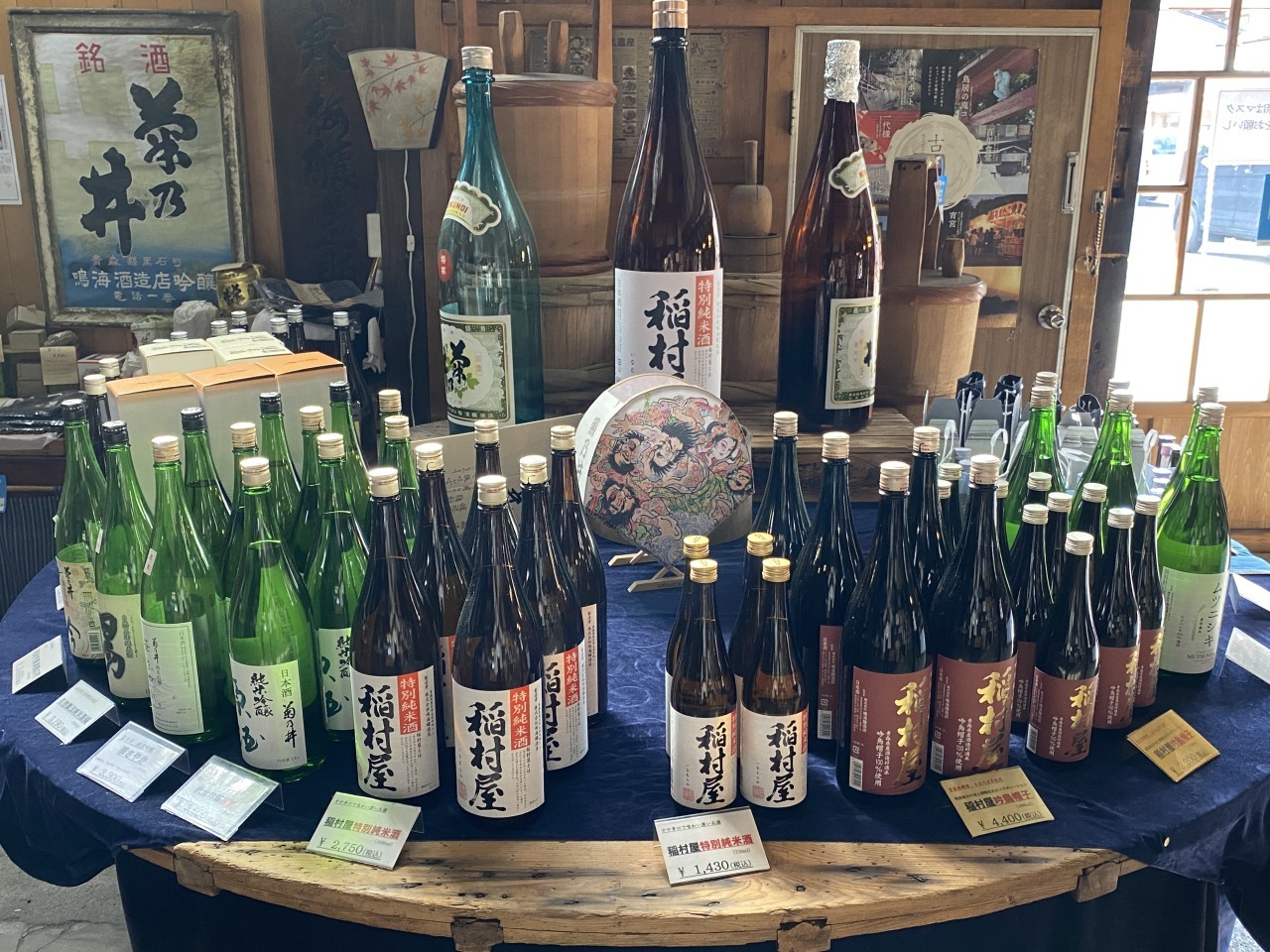Shrines, temples, and churches: Spiritual sites of the Tsugaru area
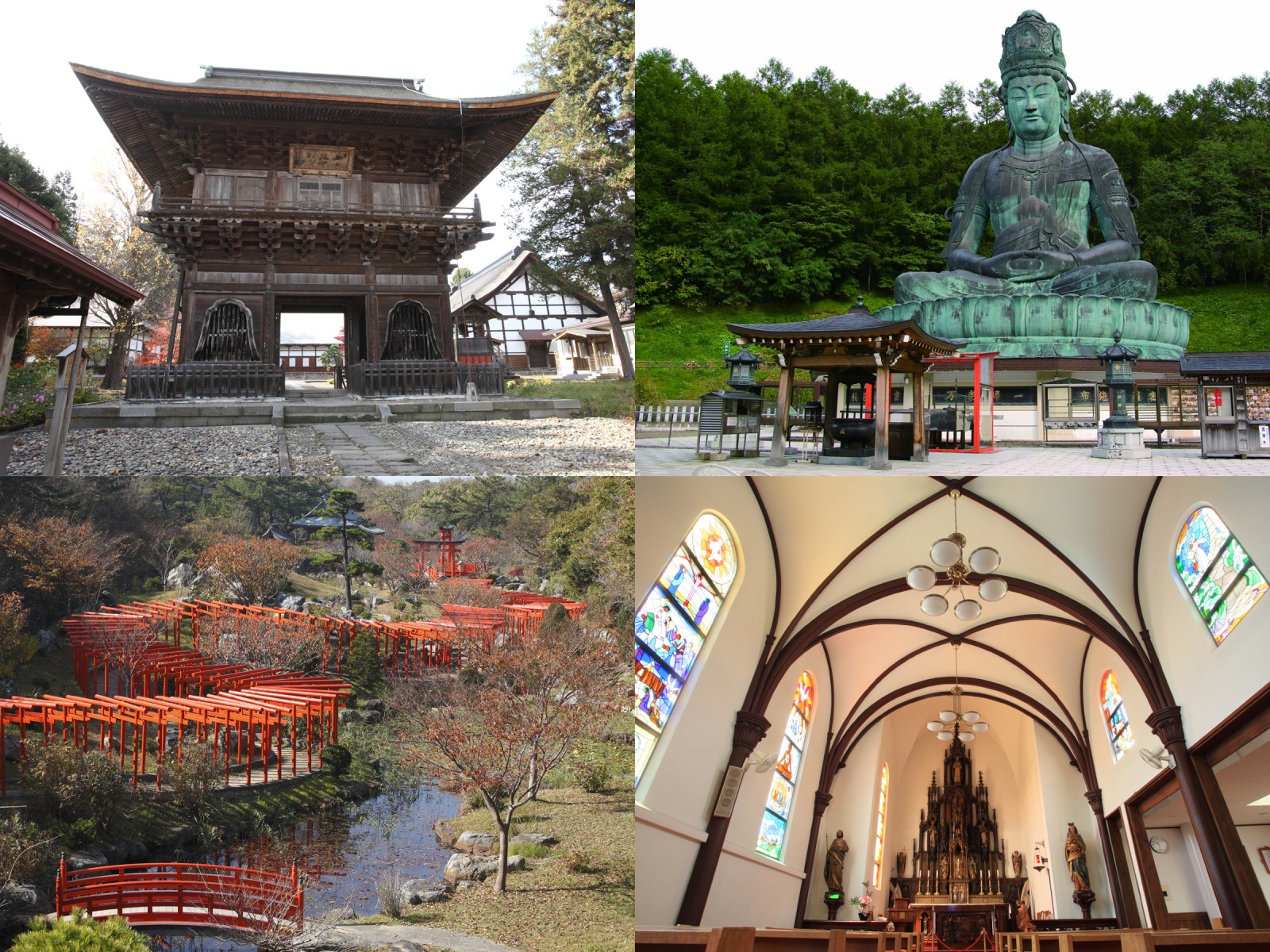
With its rich history, the Tsugaru area is home to numerous Buddhist temples, Shinto shrines, and even Christian churches. The following sites are sure to please anyone with an interest in history, culture, or architecture.
Choshoji Temple and the Zen District (Hirosaki City)
Located a short walk from Hirosaki Castle, Zenringai (meaning “forest of Zen”) is a district where 33 Zen Buddhist temples are clustered. Its origins date back to 1610, when Nobuhira, the lord of Hirosaki Castle, moved 33 Zen temples from throughout the Tsugaru region to the southwest of the castle, considered an unlucky direction in feng shui, in order to ward off evil spirits.
The entrance to the district is marked by a great black gate. Just inside stands Sazaedo, a striking, red-lacquered octagonal wooden structure. As you walk down the quiet street, you will pass a multitude of temples in different styles as well as centuries-old cedar trees.
At the far end of the street looms the main gate of Choshoji Temple. This imposing wooden structure was built in 1629. Upon entering the temple’s grounds, you will find a main hall, living quarters, temple bell, and hall containing Buddhist statues. At the back of the grounds stand the mausoleums of successive generations of the Tsugaru clan, the rulers of Hirosaki Castle. Surrounded by forest, the tombs have a solemn and peaceful atmosphere.
Saishoin Temple (Hirosaki City)
Although not located inside the Zen District, Saishoin Temple is only about two kilometers away. It is famous for its five-story pagoda, which was built in 1667 without using a single nail. The pagoda is considered to be the most beautiful in the Tohoku region and makes for a stunning sight throughout the seasons, whether juxtaposed with weeping cherry blossoms in spring, greenery in summer, colorful leaves in fall, or snow in winter. The temple is also unique in that its guardian statues are adorable rabbits, rather than the typical lion-dogs. In fact, a rabbit motif can be found throughout the temple, which is thought to make it especially lucky for those who have the rabbit as their Chinese zodiac sign.
Seiryuji Temple (Aomori City)
This relatively new temple is famous for its Buddha statue known as the Great Showa Buddha. Towering over 21 meters in height and weighing 220 tons, it is the tallest seated bronze Buddha statue in Japan, larger even than the famous Great Buddha statues of Nara and Kamakura. Despite its imposing size, the statue has a serene, contemplative expression that exudes benevolence. At 39 meters, the temple’s five-story pagoda is also one of the tallest in Japan. The main hall of the temple houses an epic painting titled “Descent of Amida and the Heavenly Multitude” and other Buddhist treasures that are not to be missed.
Iwakiyama Shrine (Hirosaki City)
Located near the base of the scenic Mount Iwaki, Iwakiyama Shrine has a history dating back over 1,200 years. While the original wooden structures have had to be replaced due to damage from the fierce wind and heavy snow of Aomori winters, some of the current ones are still several centuries old. The colorfully painted, intricate wooden carvings on the shrine buildings are often compared to those of Toshogu Shrine in Nikko. Although the shrine itself was established in 780, its true origins are even older, as Mount Iwaki was an object of worship for the Emishi tribes who lived in the area prior to its settlement by the Yamato (ancestors of the modern-day Japanese) people. As you walk along the solemn tree-lined approach to the shrine, you may experience the sense of awe felt by these prehistoric people toward the power of the mountain.
Takayama Inari Shrine (Tsugaru City)
Despite its somewhat remote location, Takayama Inari Shrine is worth the visit for those who would like to take in the otherworldly sight of rows upon rows of bright red torii gates (without suffering the infamous crowds of Fushimi Inari Shrine in Kyoto). Numbering in the hundreds, the gates wind like an undulating serpent through a carefully cultivated Japanese garden, with countless fox statues adding to the mystical atmosphere. The juxtaposition of the reddish orange torii gates with the lushly green forest and garden and the glimmering pond has made this shrine a paradise for photographers, as well as a social-media sensation.
Uto Shrine (Aomori City)
The guardian shrine of Aomori, Uto Shrine has a very long history, dating back to the time when the area that is now Aomori City was known as Uto Village. Although the exact year of the shrine’s founding is unknown, it was rebuilt in 807. It is associated with the woodblock artist Munakata Shiko, who played on its grounds as a child, and the shrine houses some of his beautiful prints. The grounds also feature a scenic Japanese garden and a pond filled with carp, as well as stones inscribed with haiku by the poet Matsuo Basho.
Historic churches of Hirosaki City
When the Meiji Restoration of 1868 ended the period of isolation imposed by the shogunate, Japan was faced with the enormous task of modernizing its society. The government of Hirosaki took an especially proactive approach, inviting foreign teachers and technical experts to live in the city and share their knowledge. These Westerners were soon followed by missionaries spreading the gospel of Christianity among the people, and as a result many churches were built in the city. Thanks to the fact that Hirosaki was spared from firebombing during World War II, many of these historic churches still stand today.
The Hirosaki Episcopal Anglican Ascension Church is an imposing Gothic structure built in 1921 using red bricks, fieldstone quarried near Hirosaki, and Aomori cypress wood. The triple arch of the bell tower is said to represent the Holy Trinity. The church makes for an especially beautiful sight at night when it is illuminated by floodlights.
The Hirosaki Catholic Church, a Romanesque structure built in 1910, is exceptional for its unique blend of East and West. Due to the tatami-mat flooring, a remnant from when congregants sat on the floor to pray, visitors must remove their shoes before entering the sanctuary. In contrast to the Japanese-style tatami, an ornate Gothic altar looms at the far end of the sanctuary. It was made in 1866 and donated by the Church of Saint Thomas in Amsterdam.
Another eclectic touch is the Meiji-era Japanese-style painting of the Virgin Mary above the entrance. Sunlight streams in through the beautiful stained-glass windows, which depict not only Bible scenes but also symbols of Hirosaki such as Mount Iwaki, the Tsugaru shamisen, and apples. The interior can be viewed by the public at any time except during Sunday-morning masses.
